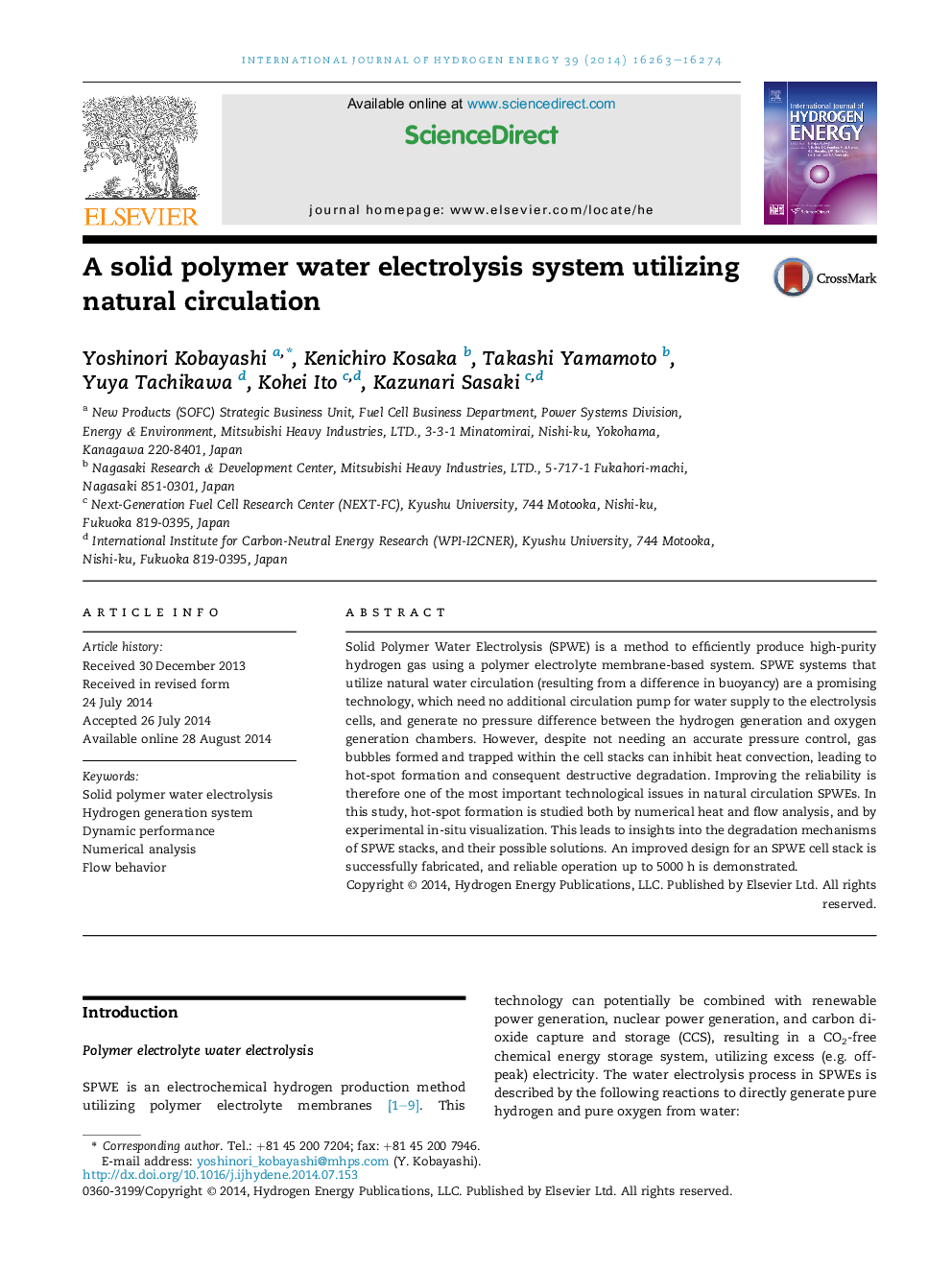| Article ID | Journal | Published Year | Pages | File Type |
|---|---|---|---|---|
| 1280964 | International Journal of Hydrogen Energy | 2014 | 12 Pages |
•A solid polymer water electrolysis system has been successfully developed.•The electrolyzer system can operate with natural circulation without pumping unit.•Gas bubble accumulation to form hot spots was verified as the degradation mechanism.•5000-h operation using the improved 10-cell electrolyzer stack was demonstrated.
Solid Polymer Water Electrolysis (SPWE) is a method to efficiently produce high-purity hydrogen gas using a polymer electrolyte membrane-based system. SPWE systems that utilize natural water circulation (resulting from a difference in buoyancy) are a promising technology, which need no additional circulation pump for water supply to the electrolysis cells, and generate no pressure difference between the hydrogen generation and oxygen generation chambers. However, despite not needing an accurate pressure control, gas bubbles formed and trapped within the cell stacks can inhibit heat convection, leading to hot-spot formation and consequent destructive degradation. Improving the reliability is therefore one of the most important technological issues in natural circulation SPWEs. In this study, hot-spot formation is studied both by numerical heat and flow analysis, and by experimental in-situ visualization. This leads to insights into the degradation mechanisms of SPWE stacks, and their possible solutions. An improved design for an SPWE cell stack is successfully fabricated, and reliable operation up to 5000 h is demonstrated.
